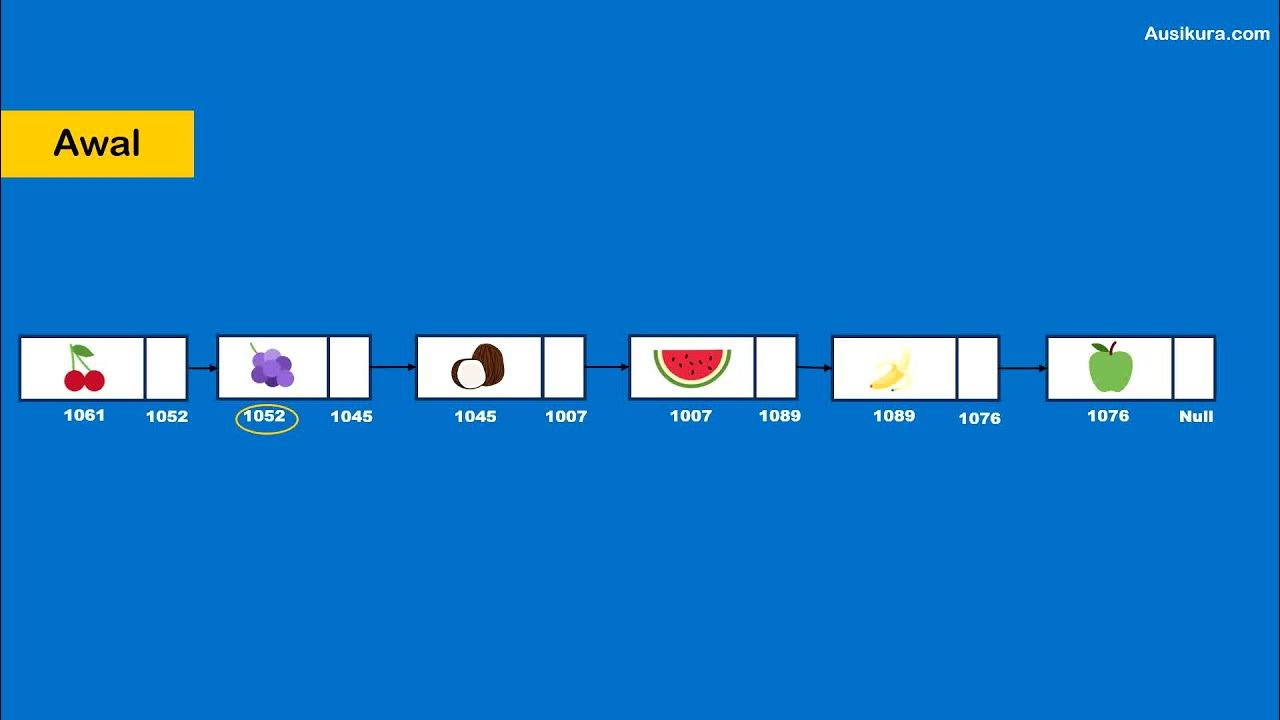Linked List Data Structure | Illustrated Data Structures
Summary
TLDRIn this video, the concept of linked lists is explored, highlighting their flexibility over arrays. Linked lists allow dynamic sizing, can store mixed data types, and enable faster insertion and deletion operations. The video explains how nodes, which consist of data and pointers to the next node, form the structure of a linked list. It compares the performance of linked lists with arrays, showcasing their O(1) insertions and deletions versus arrays’ O(n). Different types of linked lists (singly, doubly, and circular) are also discussed. The video concludes with a practical implementation of linked lists and their operations in code.
Takeaways
- 😀 Linked lists are a linear collection of items where each item points to the next one, unlike arrays which have consecutive memory allocation.
- 😀 Arrays have limitations like fixed size, elements of the same type, and slower insertion/deletion operations compared to linked lists.
- 😀 Linked lists have dynamic sizing, can store elements of different types (numbers, booleans, strings), and offer faster insertions and deletions.
- 😀 A linked list consists of nodes, where each node contains data and a memory address pointing to the next node, with the last node pointing to null.
- 😀 Insertion operations in linked lists (at the start, middle, or end) have constant time complexity (O(1)), unlike arrays which have linear time complexity (O(n)).
- 😀 Deletion from a linked list (start, middle, or end) is also constant time (O(1)), while deleting from an array requires shifting elements and has linear time complexity (O(n)).
- 😀 Traversing a linked list involves visiting each node in sequence, with a time complexity of O(n).
- 😀 Accessing elements in a linked list takes linear time (O(n)) since nodes must be visited in order, unlike arrays where access is constant (O(1)) using indices.
- 😀 There are different types of linked lists: singly linked lists (each node points to the next), doubly linked lists (nodes point to both next and previous nodes), and circular linked lists (tail points to the head).
- 😀 A doubly circular linked list has nodes that point to both the previous and next nodes, with the tail pointing to the head, creating a circular structure.
Q & A
What is a linked list?
-A linked list is a linear collection of elements, where each element points to the next item in the list. It is a flexible data structure where nodes can be stored non-contiguously in memory.
What are the main limitations of arrays compared to linked lists?
-Arrays have several limitations: 1) Elements are placed consecutively in memory, 2) The size is fixed once defined, 3) All elements must be of the same type, and 4) Insertion and deletion operations are slower because elements need to be shifted.
What are the advantages of using a linked list over an array?
-Linked lists offer dynamic size, meaning you can keep adding elements without predefining the list's size. Additionally, elements can be of different types, and insertion and deletion operations are much faster compared to arrays.
What is the structure of a node in a linked list?
-A node in a linked list has two components: 1) the data to be stored, and 2) the memory address of the next node in the list.
How is the last node in a linked list different from other nodes?
-The last node in a linked list has its next address set to null, indicating there are no other nodes following it.
What is the time complexity of inserting a node in a linked list?
-The time complexity of inserting a node in a linked list, whether at the start, end, or middle, is constant, O(1).
How does insertion in an array differ from insertion in a linked list?
-In an array, inserting an element requires shifting other elements to make space, leading to a time complexity of O(n). In contrast, insertion in a linked list can be done in constant time O(1) if the node's position is known.
What is the time complexity of deleting a node from a linked list?
-The time complexity of deleting a node from the start, end, or middle of a linked list is constant, O(1).
How does deletion in an array compare to deletion in a linked list?
-In an array, deleting an element requires shifting the remaining elements, which results in a time complexity of O(n). In contrast, deletion in a linked list only involves changing the references of adjacent nodes, making it faster with a time complexity of O(1).
What is the time complexity of traversing a linked list?
-The time complexity of traversing a linked list is O(n), as it requires visiting each node in the list sequentially.
What is the difference between singly, doubly, and circular linked lists?
-In a singly linked list, each node contains a reference to the next node. A doubly linked list adds a reference to the previous node as well. A circular linked list connects the last node back to the head, forming a circle, while a doubly circular linked list has both forward and backward references between nodes.
What is the main drawback of using linked lists compared to arrays?
-The main drawback of linked lists is that accessing elements is slower, with a time complexity of O(n), as there are no direct indexes or pointers like in arrays, requiring traversal from the head to the desired node.
Outlines

This section is available to paid users only. Please upgrade to access this part.
Upgrade NowMindmap

This section is available to paid users only. Please upgrade to access this part.
Upgrade NowKeywords

This section is available to paid users only. Please upgrade to access this part.
Upgrade NowHighlights

This section is available to paid users only. Please upgrade to access this part.
Upgrade NowTranscripts

This section is available to paid users only. Please upgrade to access this part.
Upgrade Now5.0 / 5 (0 votes)





